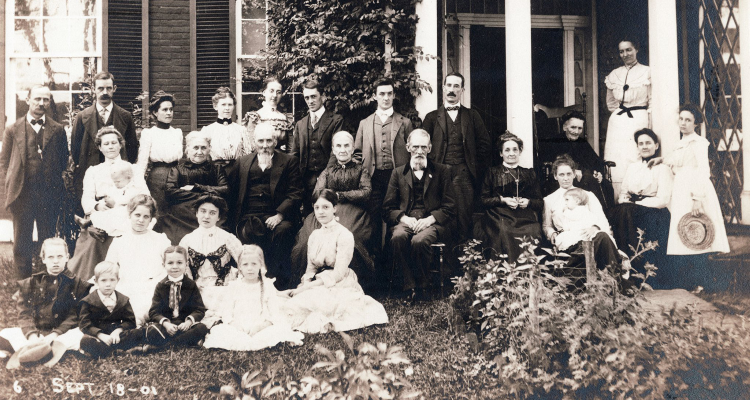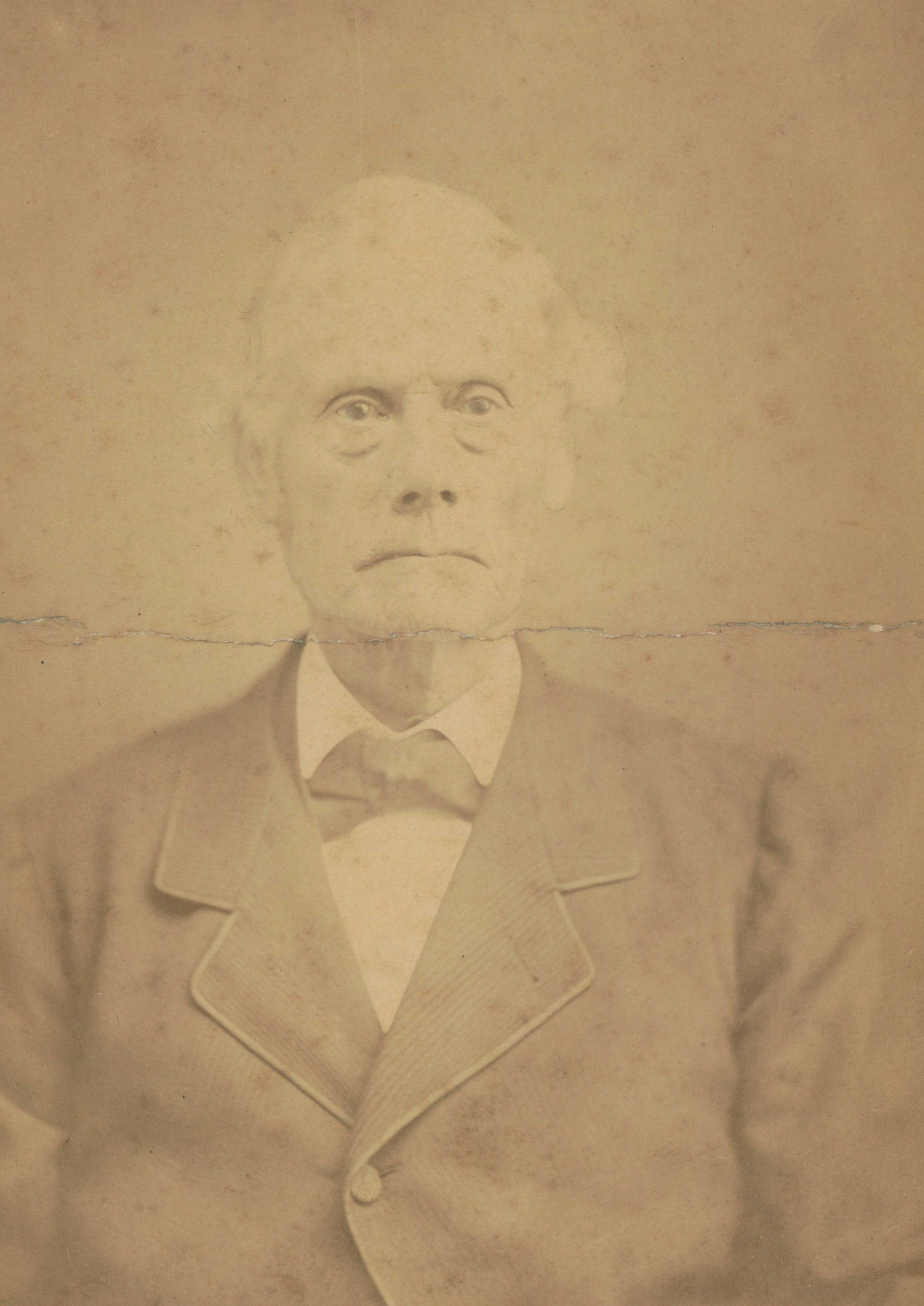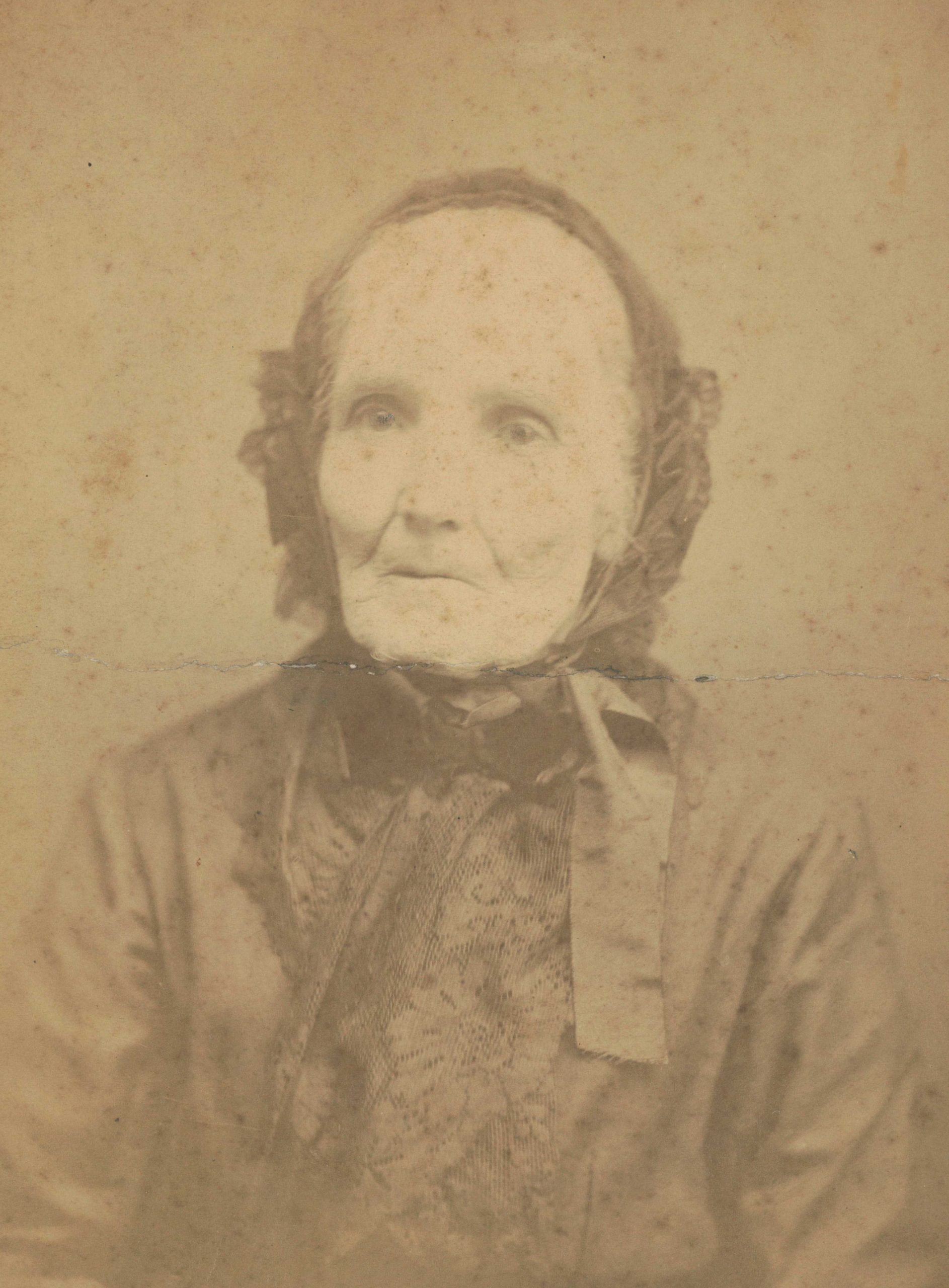Author’s Note: It is an honor to be invited and share this story of my ancestral journey with our Weelunk readers to mark the milestone occasion of the 50th anniversary of the Wheeling Area Genealogical Society. It was through their gracious assistance that this article was made possible.
I often find myself muttering “Hmmm…” under my breath when I’m researching. Depending on what I’ve just learned, it can be a “hmmm?” or a “hmmm!” When it comes to history and genealogy, my “hmmms” can become even more prolific.
Growing up, I was always interested in my maternal grandmother’s family history centering on Wheeling and Clarington. Generations of family had built lives in both towns yet remained closely connected thanks to the Ohio River. While Wheeling was home to many in the family, Clarington has served as our ancestral home for 200 years.
Throughout the process of researching and developing this article, I was fortunate to be assisted by Carol Bell of the Wheeling Area Genealogical Society (WAGS). While my passion is rooted firmly in history and genealogy is a form of history, admittedly, I am not much of a genealogist even though I’ve pored over my own to a limited extent. Carol’s invaluable assistance made all the difference in helping me discover new information. Having access to ancestry.com through WAGS, the online resources of the Ohio County Public Library and the Wheeling Intelligencer Archives provides so many like me with the opportunity to reconnect with our family’s past.
Coming to America
The Thomas’ came to America from Wales in 1752, settling first in Geneva, New York. The first Reuben Thomas (1784-1853) was born of Welsh parents and married Laura Mason on April 23, 1807. Their oldest child, Gardner Thomas (1808-1888), my fourth great-grandfather, was born in Geneva and very much enjoyed the scenic beauty of Seneca Lake and referred to his childhood home as the “York State.”
Eventually, the family left upstate New York and travelled down the Allegheny and Ohio Rivers by flatboat eventually settling first in Woodsfield, the county seat of present-day Monroe County, Ohio and then in Clarington.
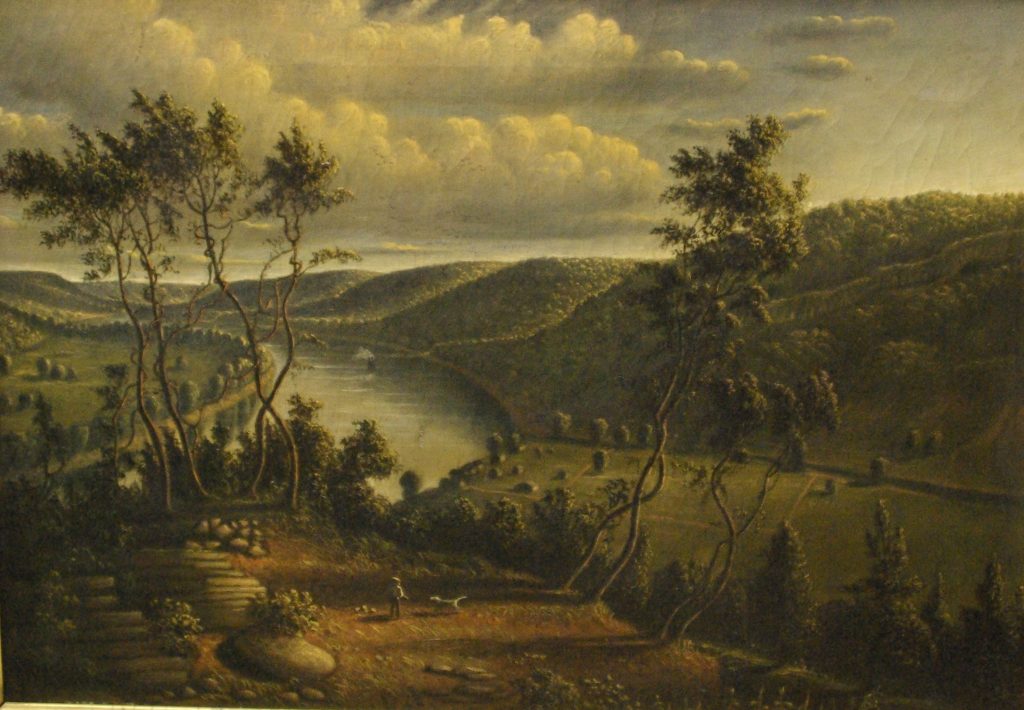
Planting Roots in Clarington
Gardner joined the family but decided to relocate to the river after applying for and obtaining a parcel of land in Clarington. As a young man he was employed, as was James A. Garfield, who would later become the 20th President of the United States, in building the Erie Canal. Sometime around 1828 Gardner met and married Matilda Archer (1809-1903). Matilda was the granddaughter of noted Indian scout and early Ohio Valley settler Kinzie Dickerson (1758-1835), whose escapades can be found within Allan Eckert’s book “That Dark and Bloody River.” Through this bloodline, Kinzie is my sixth great-grandfather.
Once in Clarington, Gardner and Matilda built a small Greek Revival brick home in the 1840s on the hillside overlooking the river, which still stands today. Gardner was a shoemaker and opened a shop on his property. Gardner and Matilda’s marriage was a successful one resulting in six children, including sons, Thadeus (1830-1919) and Reuben Mason (1833-1908), my third great-grandfather.
Two Brothers and the River
As brothers, Thadeus and Reuben were not only close in age but close in bond. Seeing opportunity on the river, both set out to begin lifelong careers and eventually became two of the most widely-known and respected rivermen of their era.
Thadeus, affectionately known as “Captain Thad” among his peers, was an owner of many steamboats with his brother Reuben, including the Leroy, Jewel, Telegram, James Rees, the ill-fated Scioto, and the City of Wheeling. Residing on a large farm north of Clarington, his stately two-story brick home featured a gray-slate roof with a large encircled “T” in red, which could be seen by passing steamers.
In 1882, he experienced what could only be described as the most devastating period of his life when his excursion steamer Scioto collided with the John Lomas near Mingo Junction in the late evening hours of July 4. In minutes, the Scioto sank resulting in approximately 70 deaths, including Thad’s son Daniel, who was in the engine room. News of the disaster spread rapidly making headlines across the country. The tragedy and loss of his son would follow him the rest of his days.
Like his brother, Reuben also enjoyed a storied career on the Ohio River. As a young man, he moved to Cincinnati in 1851 where he entered the machinist trade for VanDuzen Machine Company, which manufactured steam engines. A man of superb intelligence, he quickly excelled at the trade and was soon installing the engines. On May 29, 1856 he married Covington, KY belle Eliza Woodington (1838-1910).
At the outbreak of the Civil War, the Thomas family were staunch Unionists with some members serving in the Union Army. During this period, Reuben was working for the federal government installing engines on their gunboats when they were building the fleet which would open the way for the North to conquer the Mississippi River Valley. At the war’s close, he remained in the southern part of the country before eventually moving back to Clarington.
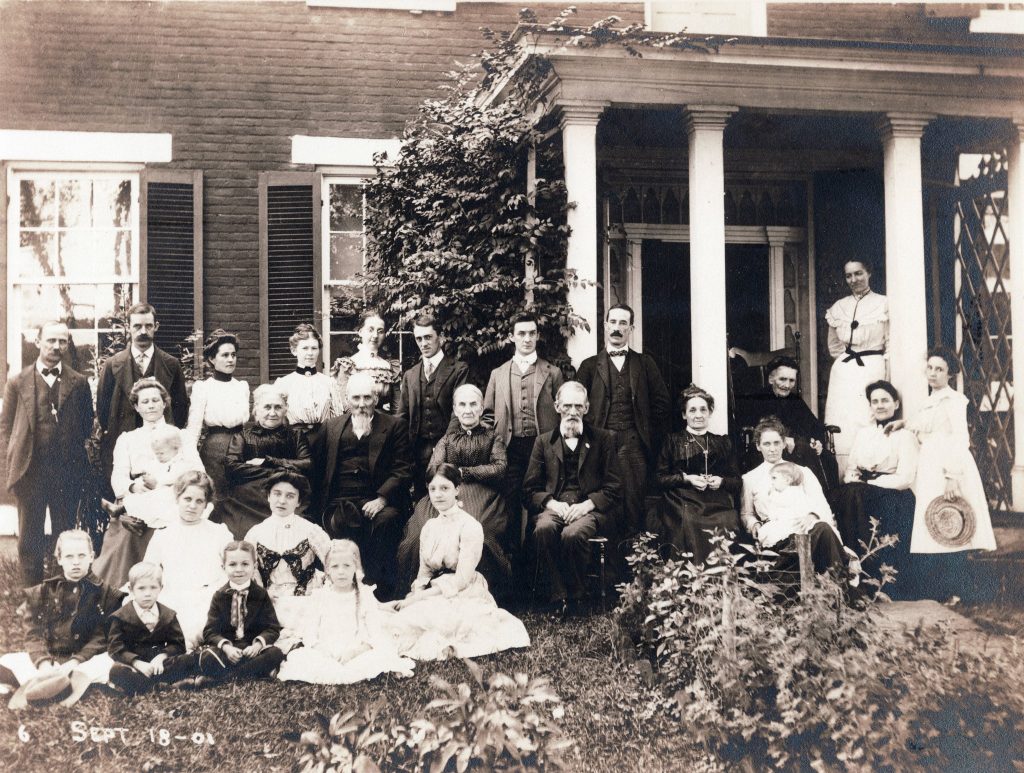
Keeping Up Steam
Upon his return home, Reuben became interested in the Wheeling packet boat trade. Seeing the opportunities before him, Reuben became a one-fourth owner of the Sunfish-Wheeling Packet Company. He remained in this role until 1884, when he was appointed by the U.S. Treasury Department as U.S. Inspector of Steam Boilers. Reuben and Eliza then moved to Wheeling Island at 110 S. Broadway St.
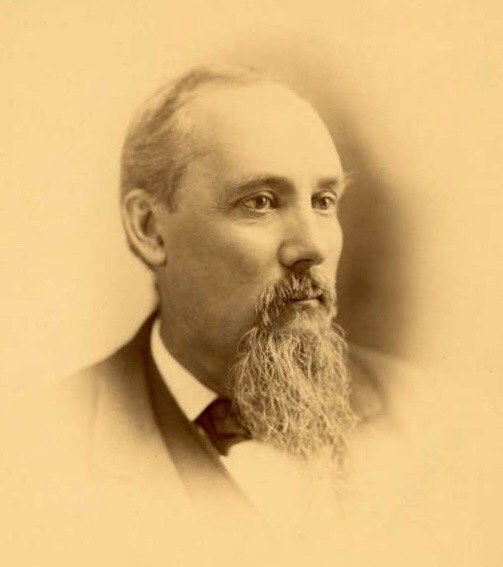
As Inspector of Boilers, Reuben kept offices in Wheeling’s Customs House and had a reputation for running a tight ship. He was not averse to making unannounced “raids” on steamers wherein he would board the vessel and quickly make for the engine room and attach his steam gauge for an official reading. If the boilers were “hot” in excess of what the law allowed, the engineer could expect a permanent vacation and see his license evaporate.
Around the same period, Thad placed an order with Mozena Bros. Boatyard in Clarington to construct the largest steamboat ever built there in 1899. Once the hull and superstructure were completed, the vessel was towed to Wheeling where his brother oversaw the inspection of the new steamer’s engines. Her opulent furnishings were supplied by G. Mendel & Co. of Wheeling. The steamer was christened the City of Wheeling and on a particularly beautiful September day in 1900, Reuben stood before an assembled crowd on the wharf to introduce his brother Thadeus and welcome them aboard the city’s namesake vessel. She would be the last steamboat ever completed at Wheeling.
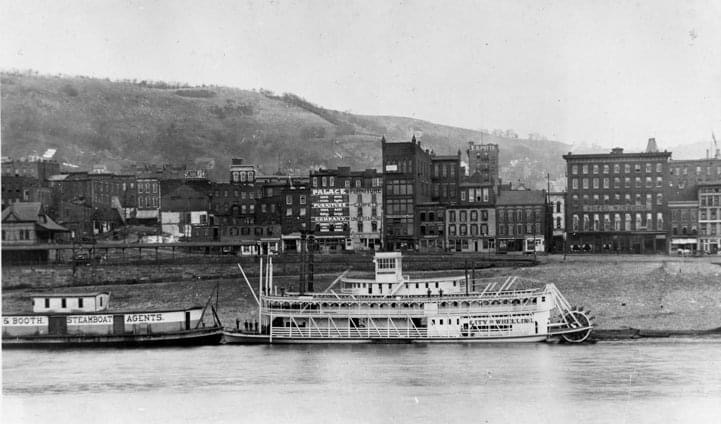
By 1903, Reuben’s health had deteriorated, effectively forcing him into retirement. One of his sons, Charles G. Thomas (1858-1935), was appointed as his replacement and enjoyed a similar respect and reputation as his father had among his peers. In a letter dated May 28, 1906 and found on ancestry.com by Carol, Reuben advises his son to, “treat them all fairly, be courteous and gentlemanly, at the same time be firm.”
Aging, yet still active in river circles, both Thad and Reuben maintained their positions among their community up until their deaths. Reuben, while being the younger brother, died first on July 7, 1908. News of his death was reported in the Wheeling Intelligencer on July 8 and described the sense of loss. “On the wharfboat here [Wheeling] and at all Ohio River wharfboats and on the packets plying the Ohio, flags are flying at half-mast out of respect to his memory. A big crowd of rivermen are expected to attend his funeral, which has not yet been arranged. Universal sorrow and regret was expressed by rivermen here when news of his death was received by his nephew Capt. E.A. Thomas of Bridgeport.”
Capt. Thad would outlive him by eleven years, passing on July 19, 1919. Both brothers, as well as their parents Gardner and Matilda, are interred in the Thomas Family plot in Clarington.
The Past in Our Wake
Another of Reuben’s son, Elmer Thomas, who is my great-great grandfather, would continue on the family tradition of being a career rivermen in his role as masterships builder at Mozena Brothers Boatyard. In late 1922 or early 1923, he and two partners bought out Mozena’s yard and renamed it Cook Bros. & Thomas Boatyard. Over his long career, he helped design and build hundreds of steamers.
Around eleven years ago, I was researching Clarington-built boats and learned, to my great shock, that a boat built in Clarington was still in existence. On a vacant lot in the Mississippi River town of Guttenberg, Iowa over 800 miles away, sat all that remained of Clarington’s boat building history.
Built in 1923, the J.A. Cresap was a wooden-hulled, gas-powered sternwheeler ordered for Joe Cresap of Moundsville, WV. Spanning a career that lasted into the 1960s, the vessel survived and outlived every vessel of its kind. From multiple renamings, sinkings, to an engine room fire, to beating the odds stacked against every wooden-hulled vessel – the Cresap refused to go away.
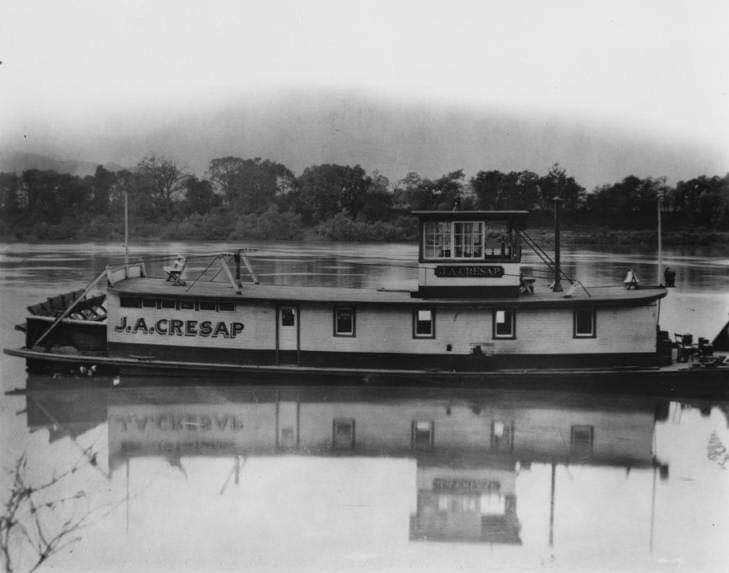
By late 2009, I had found the owner and contacted him regarding his plans for the boat. I asked if he would consider donating it to the Ohio Valley River Museum in Clarington at that time, and three more times thereafter with each response being, “No, I’m not ready to let it go yet.” Taking the hint, I told him he had my number when and if he was ever ready.
Doing the Impossible
About two weeks before Christmas in 2018, I unexpectedly received the call I’d been waiting for. He was donating the vessel and for the next eleven months we worked out the logistics of shipping a 70-foot-long, 26,000 lb. vessel from Iowa to Ohio.
Using a super load trucking company, the fragile vessel was braced and secured for its cross-country journey in November, 2019. Her pilothouse and paddlewheel were disassembled and her width shortened to accommodate roadway restrictions. The old girl was underway once again, only this time on land and returning to her birthplace.
Before the boat arrived, I pulled out a box of family documents and began reading through Elmer’s boatyard journal. As I skimmed the pages, the name Cresap suddenly jumped out at me. Here before me was the beginning history of the vessel in my great-great grandfather’s handwriting, dated April 19, 1923. With each day’s entry he noted progress on the boat, how many hours it took, and who worked on it.
Welcome Home
Walking into the large warehouse in Hannibal, Ohio I fought back tears as I climbed up the cribbing the boat was resting on and pulled myself up over the side. My emotions were running high in a surreal moment of immense pride mixed with wonder. Here I stood not only on the last surviving Clarington-built vessel but the last remaining wooden-hulled vessel of its kind in the United States. Here was my family’s past before me in what was an indescribable moment.
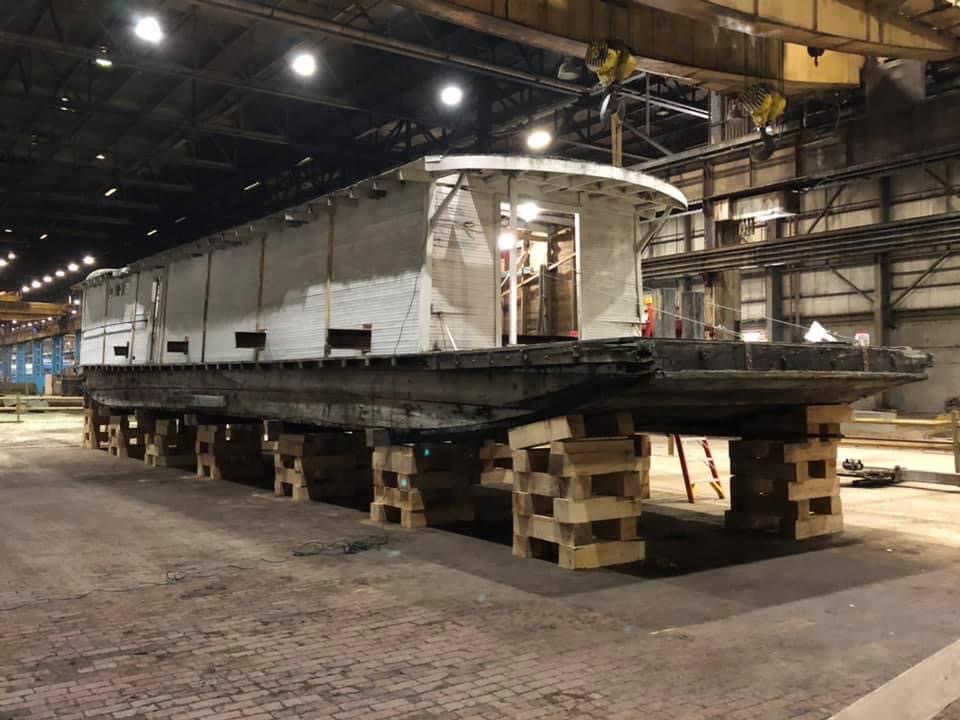
Final Thoughts
For more than 200 years, the Ohio River has been a steadfast companion and a source of continuity across every generation of the family. And without ancestry research, I would have never discovered some of the connections my ancestors had with my present life.
While I was able to draw a great deal of this article’s contents from my family’s own documents, I would be remiss in not thanking Carol Bell of the Wheeling Area Genealogical Society for her extraordinary help in searching out additional content that was previously unknown to me.
On this, the 50th anniversary of the Wheeling Area Genealogical Society, I want to offer my heartfelt thanks and gratitude to all those who have worked so diligently in helping so many people like me discover our roots. If you’re contemplating taking that ancestral journey, contemplate no more. Take the journey and discover the world of your forefathers and mothers. You never know where those “Hmmms” will lead you.
• Taylor Abbott is the treasurer of Monroe County, Ohio, and was born in Wheeling, West Virginia. He is a graduate of Ohio University and is co-founder and president of the Ohio Valley River Museum. He serves on the board directors for the Sons & Daughters of Pioneer Rivermen and is an advisor to the Ohio River Museum in Marietta, Ohio. He enjoys hiking, travel, historic preservation and restoration work. Taylor resides in Clarington, Ohio, with his wife Alexandra in a former church they purchased in 2016 and renovated into their home.


